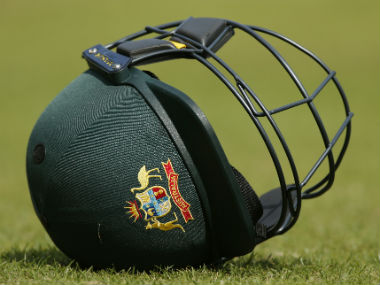The history of cricket was written by old boys clubs. The most venerable of those clubs — the MCC — was run as a private association for the benefit of its members through the medium of cricket. This MCC model was gleefully copied by the ICC, the Test and County Cricket Board ( TCCB, now ECB) Australian Cricket Board, now CA, the BCCI, the PCB, and various other national cricket associations. While all these acronyms can be confusing I shall try and spell out in plain English what these boards really were. They were the old boys club England, old boys club Australia, old boys club India, old boys club Pakistan, old boys club West Indies etc. Their administration committees were primarily run by members of the royalty or their countries’ version of royalty . [caption id=“attachment_3878001” align=“alignleft” width=“380”]  Representative photo. Reuters[/caption] Cricket for most of its initial history in India was the domain of princelings, and thus retained a lordly disdain of things commercial. The Maharajas and Nawabs in India were the patrons of cricket, and to be fair, there would not be any cricket in India today without their patronage. After the abolition of the privy purse, Indian cricket has seen politicians and large private industrialists running the show with an ex-cricketer or two thrown in to give the new regimes their legitimacy. However what was more important was the change in mindset post the rise of television. Post the 1970s, the old boys club mindset and cozy arrangements were broken by the rise of the media savvy entrepreneur — whether it was Kerry Packer in Australia or Jagmohan Dalmiya in India . English cricket did retain its commitment to the barely break even counties and did not go all out commercial until the Giles Clark era where we saw Allen Stanford helicoptering his way into Lord’s. However, when these old boys clubs transitioned into commercial establishments they forgot one thing: that if you’re going to be a profit-making entity, you start becoming accountable to regulators, employees, fans, and other stakeholders.The modern old boys clubs thought they could have the best of both worlds — to have the profit-making potential of a purely commercial establishment with a total lack of accountability of the old boys model. This has led to tensions including what I have previously described as ‘Player Brexit’. That is a series of player movements which are basically employees who understand the value they add. The current battle that Cricket Australia (CA) is fighting with the Australian Cricketer’s Association (ACA) is an example of the players (and their agents) understanding their market value. The West Indies player walkout in the middle of a series is another. With cricket largely becoming an entertainment show on TV, we could alternately look at players as part of the customer experience or the star cast of an ongoing soap opera — one which has to deliver its weekly hit of adrenaline to the arm chair experts sitting in their millions all over the world. There is also the matter of accountability on ethics. In the old boys model, it was easy for selectors and board officials to get their their sons and nephews into teams or various other parts of the administration. It is more difficult now. The administrators are reminiscent of the dwarf kingdom Erebor in Lord of the Rings who stored too much gold only to attract the dragon Smaug. Overzealous judicial committees, investigative/sting media and accountants have started looking at the game and discovering a lot of interesting things in the area of corruption, match-fixing, nepotism in selection and other such left overs of the old boys club mindset. Cricket’s administrators have to make up their mind whether they want to run the game like an old boy’s club or as a commercial establishment. If they want to run it as a commercial establishment, then they have to build the appropriate corporate governance frameworks. They need legal and accounting muscle to deal with regulators. They need to adhere to corporate governance rules. If they want to run it as a non-commercial old boys club, then they have to channel the money back into the game and not do a CA or a WICB — over negotiate with the players, thereby leading to a standoff. The commercialisation of cricket has also lead to many positives, including outstanding television coverage, a much better deal for current and retired cricketers, a better, more contemporary fan experience (except in India), and better support for women’s cricket. Rather than complaining about why they are being made so accountable for everything, cricket administrators should run the game like a professional company in a highly regulated industry. Cricket’s administrators must face reality. Personally, I would recommend the US sports leagues model where the commissioner (CEO) gets to run the league and take major decisions on players and teams. They pay top class salaries and attract the best talent in the industry. Sports persons — both active as well as retired — get the pay that they deserve. Sports associations which do not follow the US model of professional talent and Commissioner CEOs end up like cricket with an old boys club and cronyism – Hockey India, FIFA etc are testimony to this. However the BCCI did not even allow its CEO to attend the last General Meeting. They continue to resist all attempts to give these appointed executives any say. This mess is not the making of players or journalists. It is simply that cricket got too big for an old boys club to manage. With great financial power comes great accountability.
The current battle that Cricket Australia (CA) is fighting with the Australian Cricketer’s Association (ACA) is an example of the players (and their agents) understanding their market value.
Advertisement
End of Article


)




